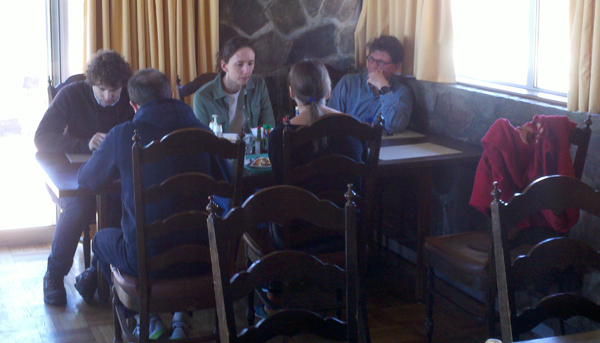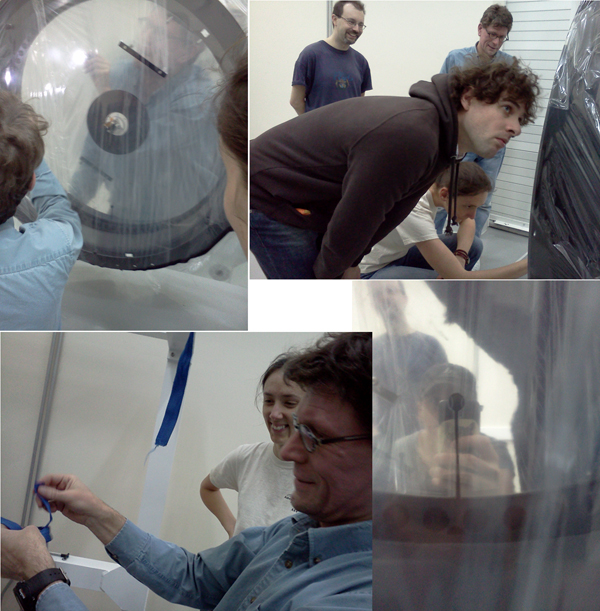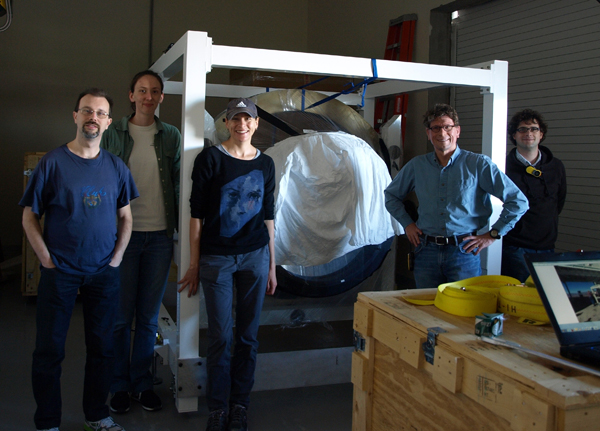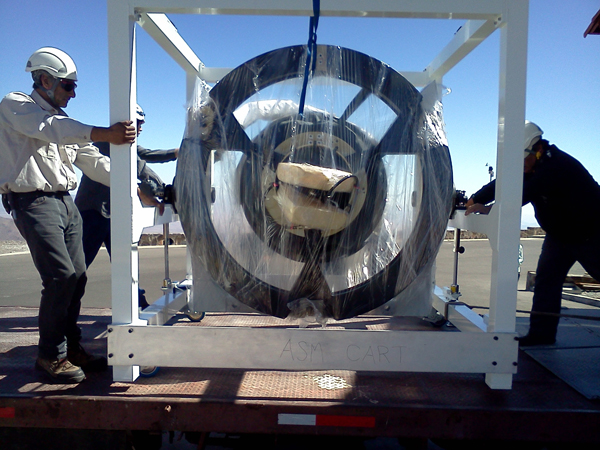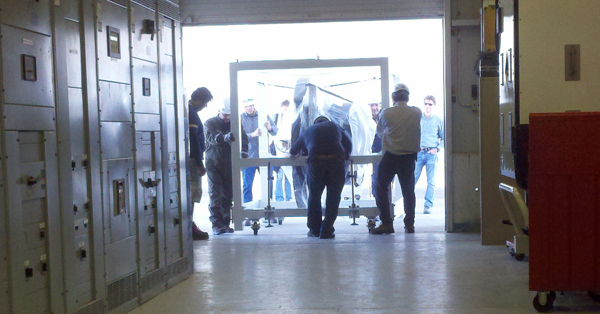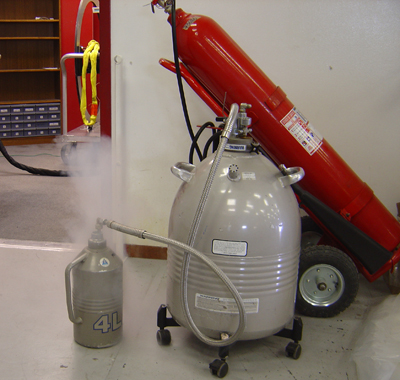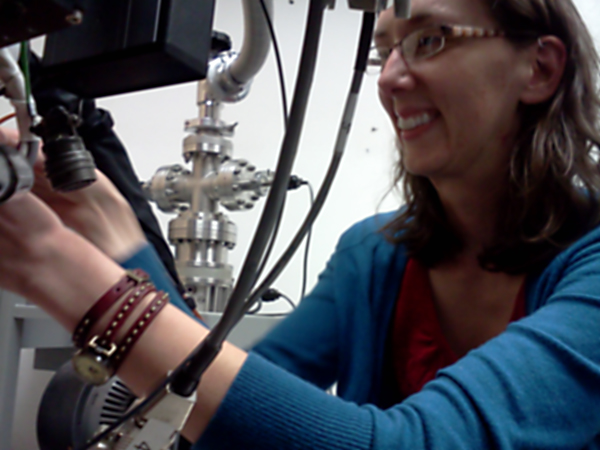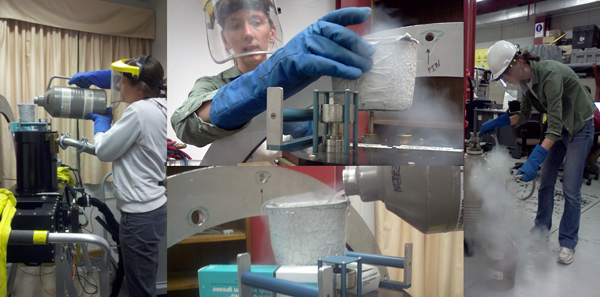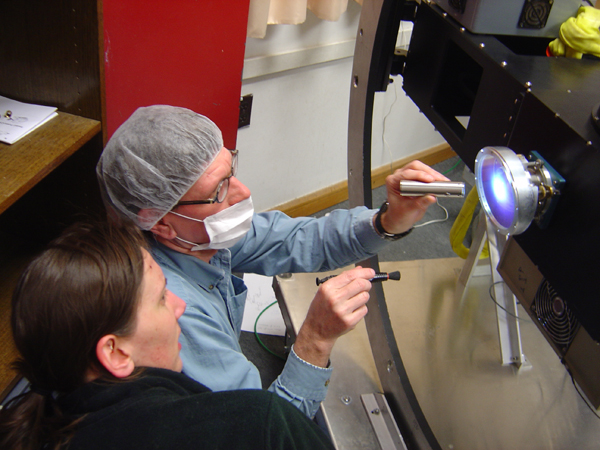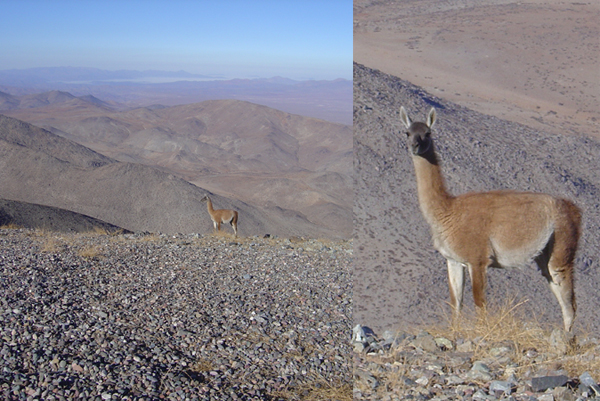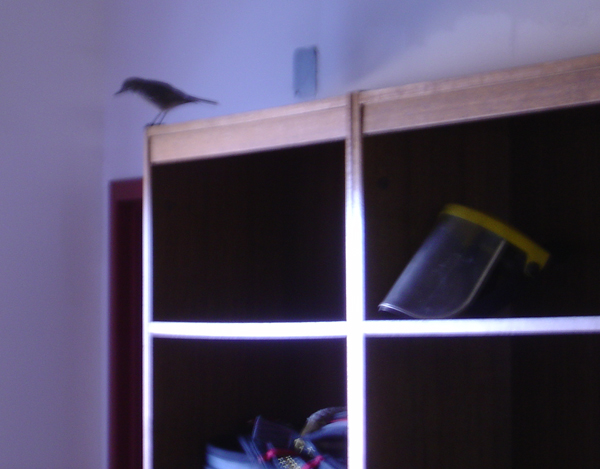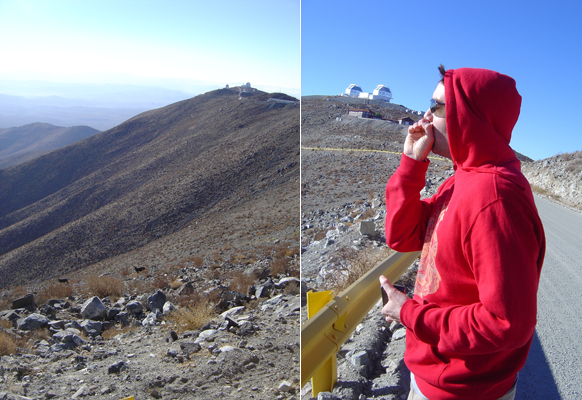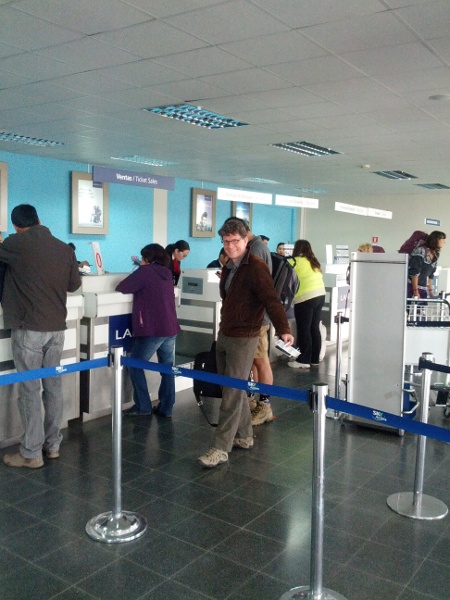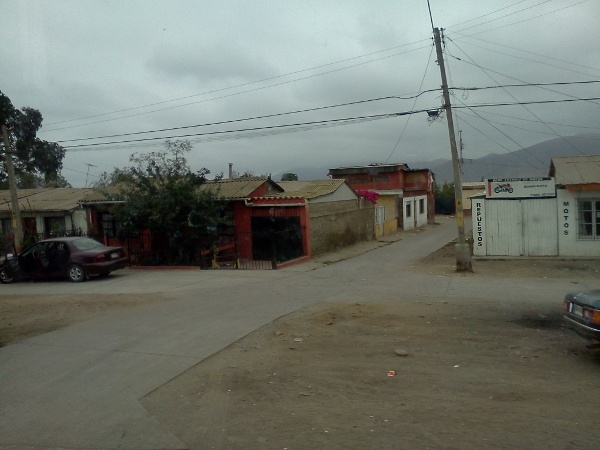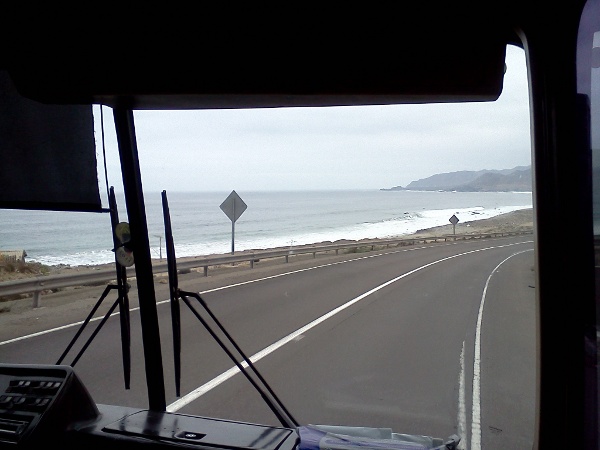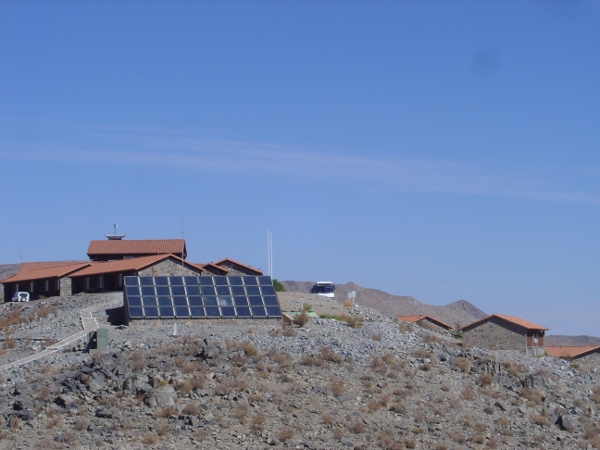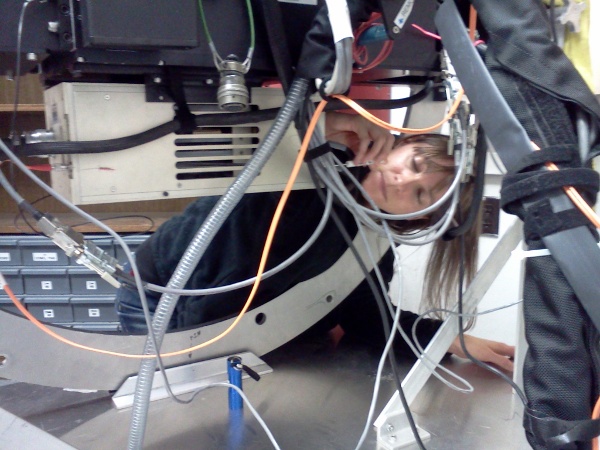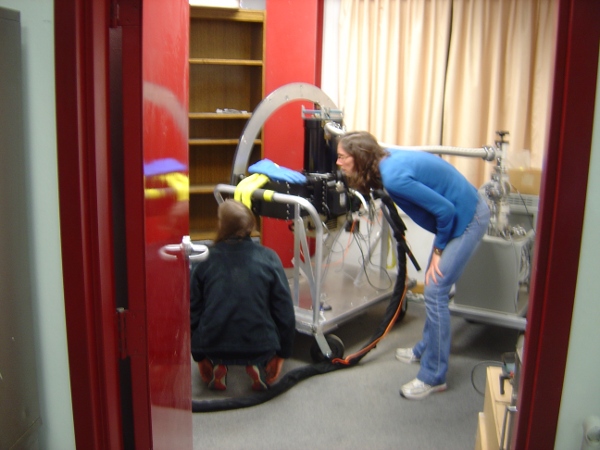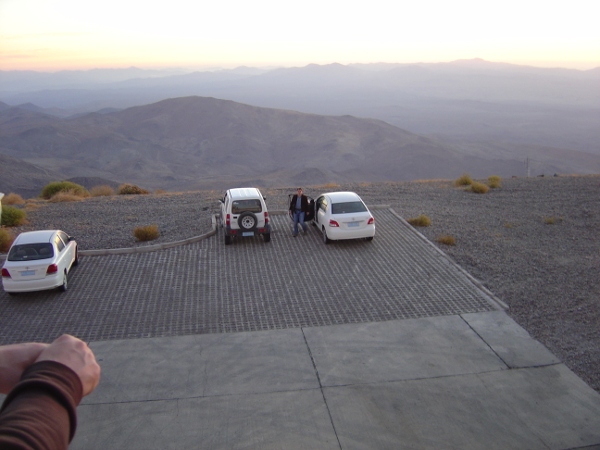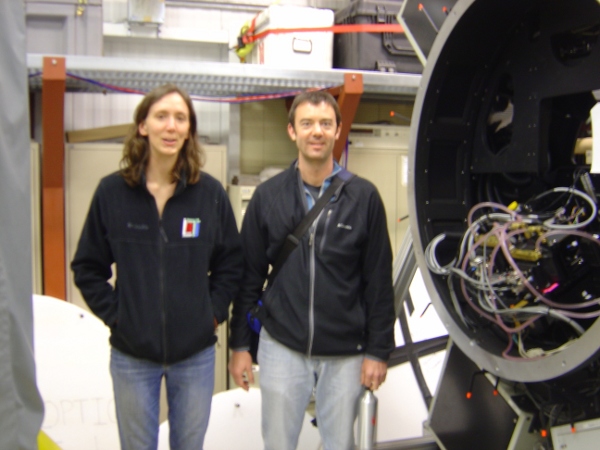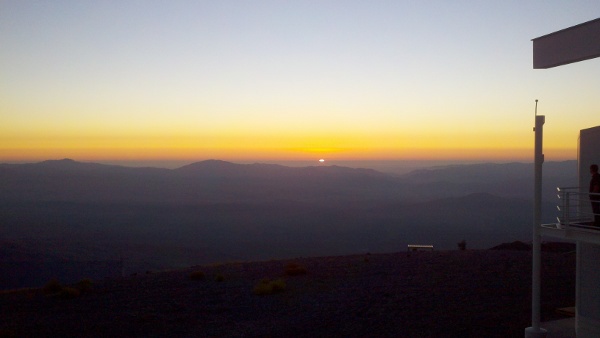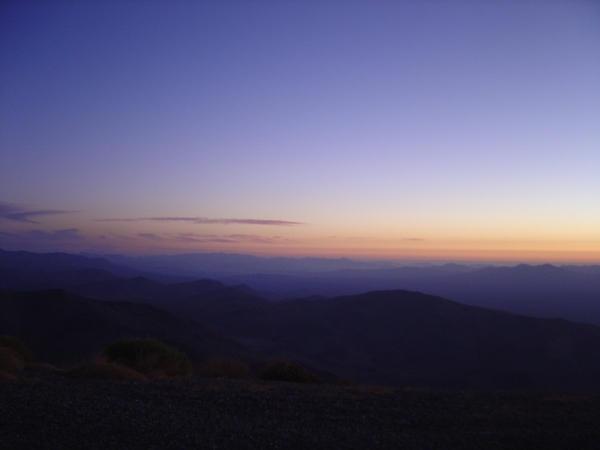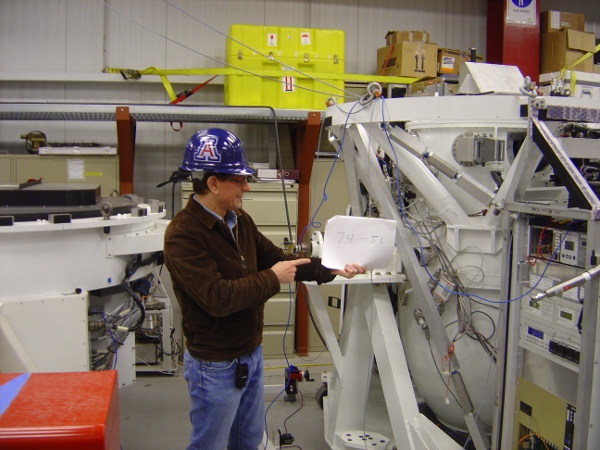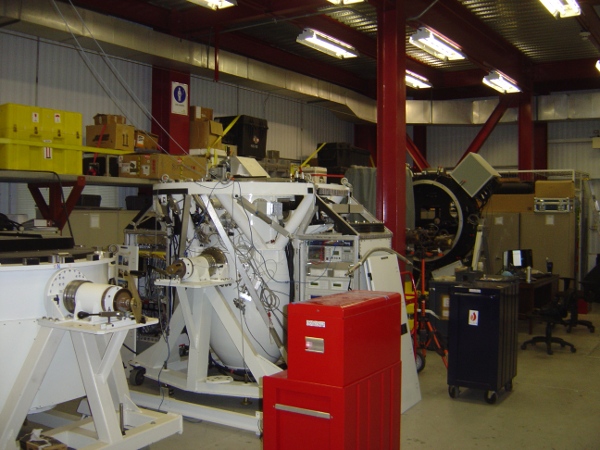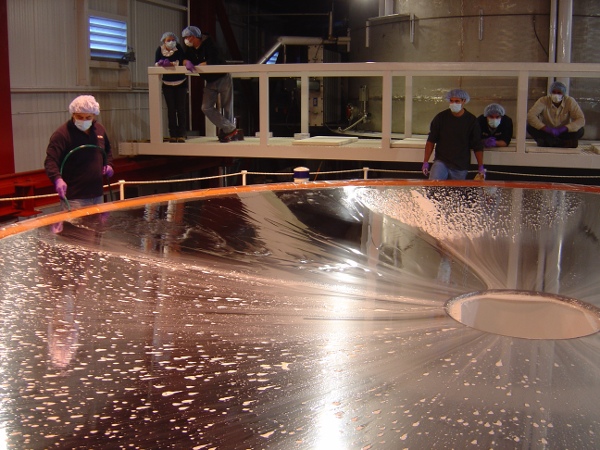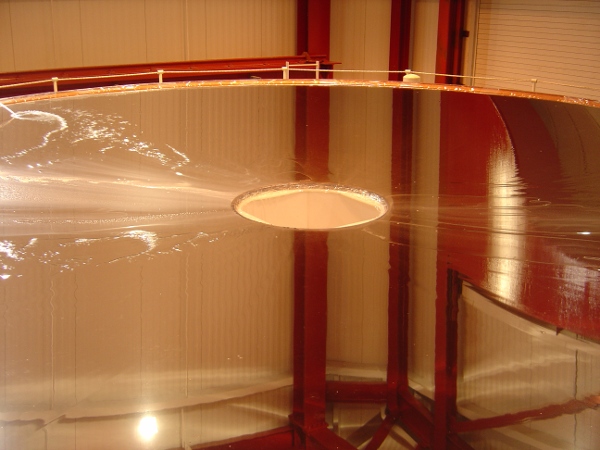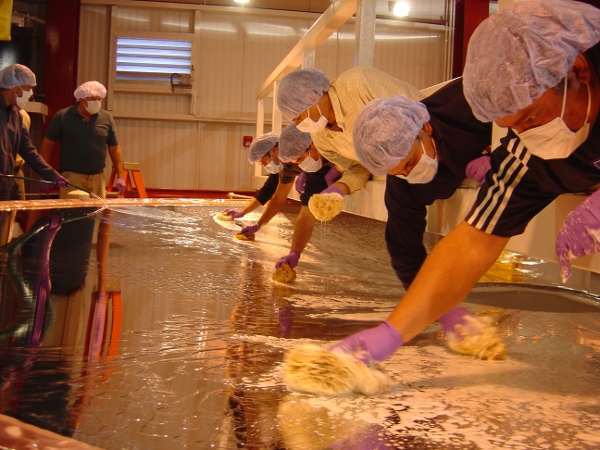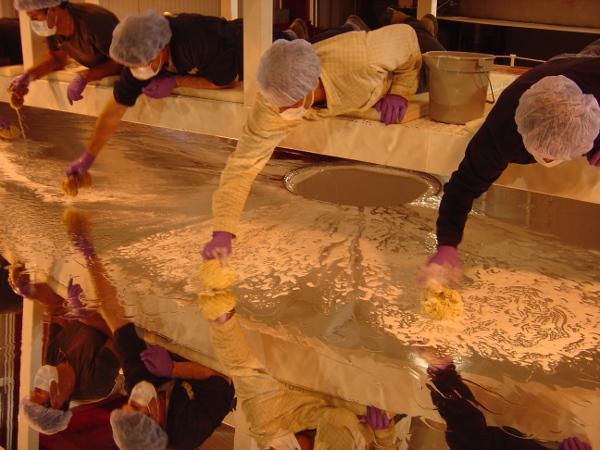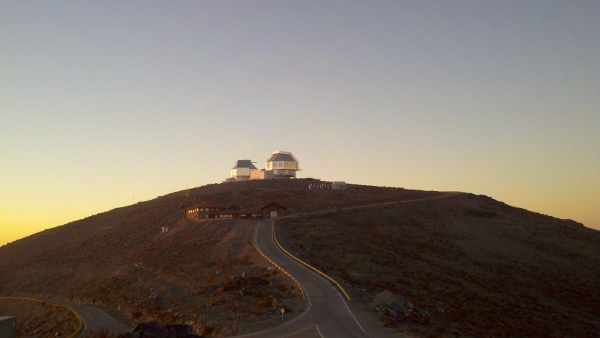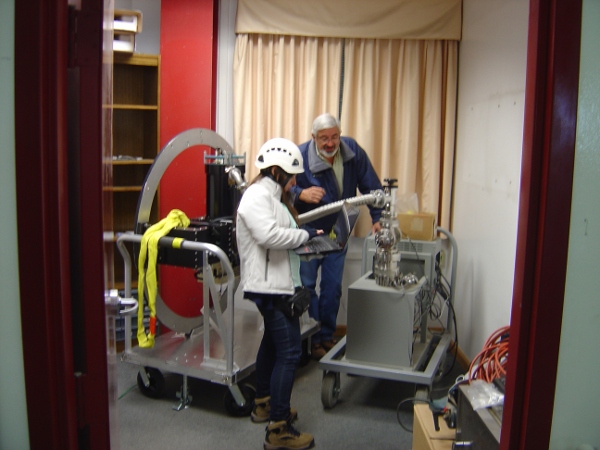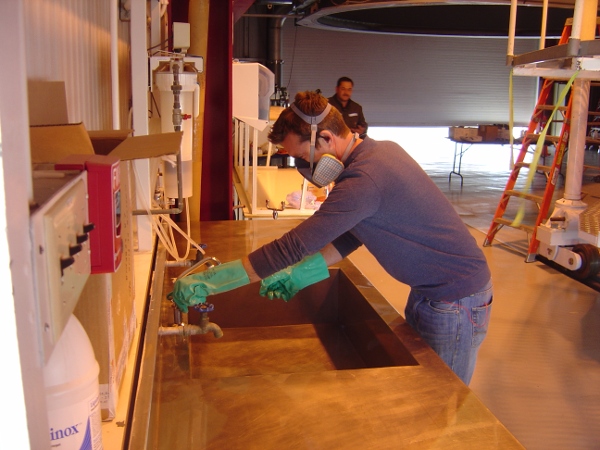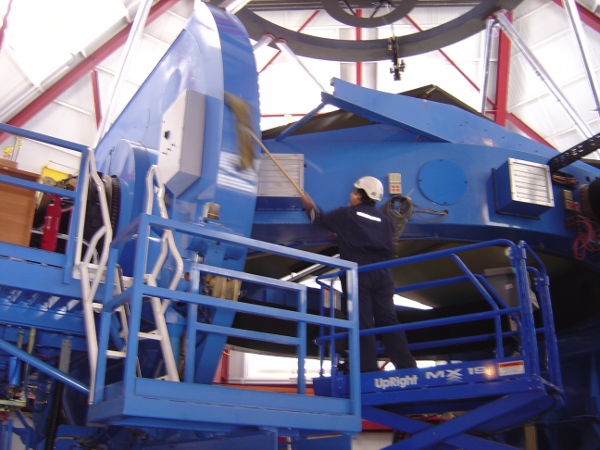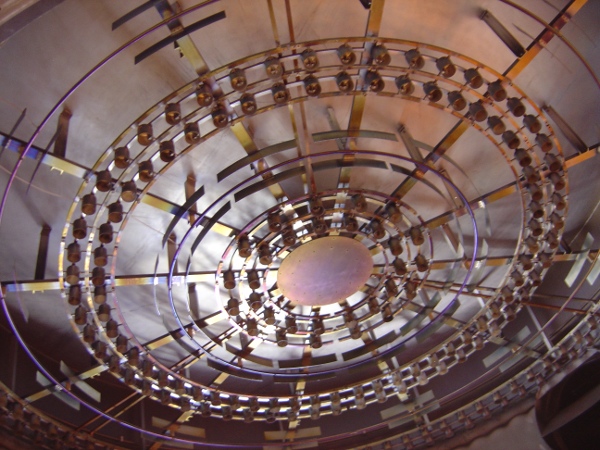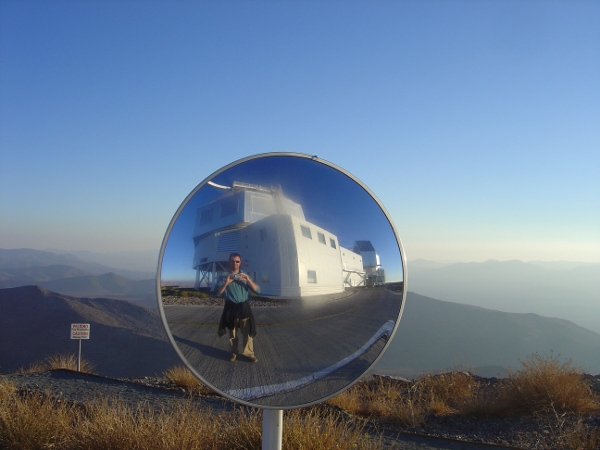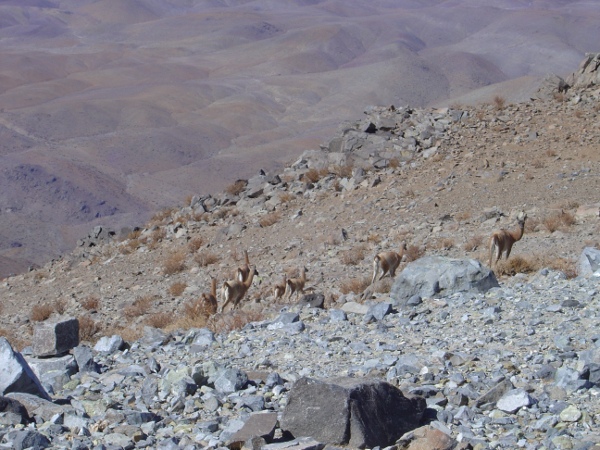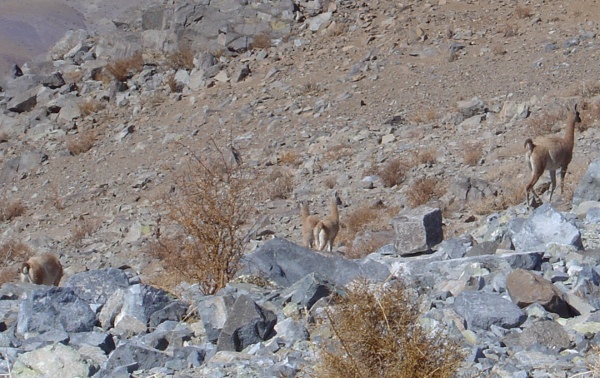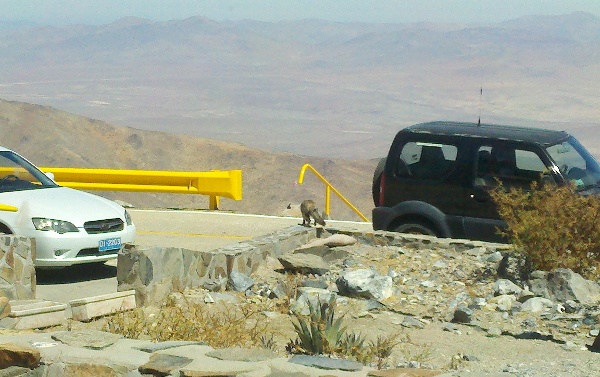Today we said goodbye to Alan. Thanks for all your help getting us up and running!
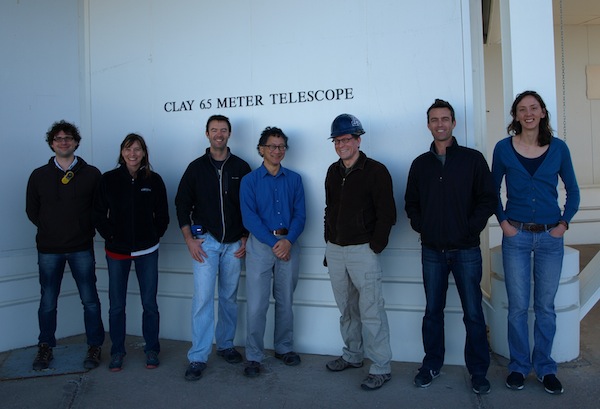
Even with Alan departing, the mountain is full to the brim with personnel, and we need all the space we can muster for the President of Carnegie’s visit later this week.
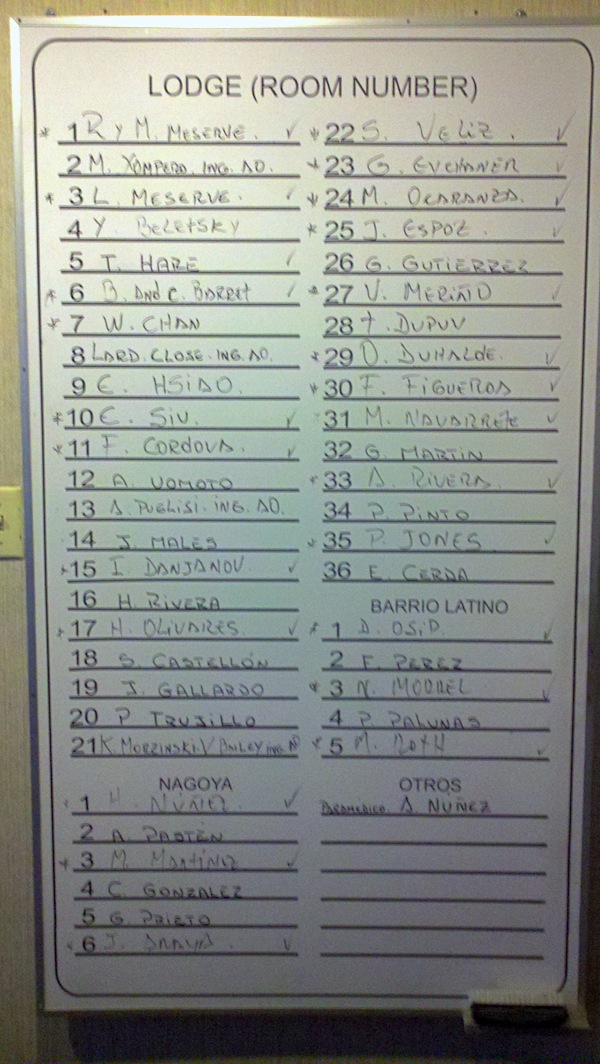
Today the crew installed the ASM. First they had to remove the other secondary mirror which was installed on the telescope, which took several hours. By mid-afternoon they were ready to install our secondary mirror (the ASM).
First, we moved the ASM into place, and cleared the area around the telescope.
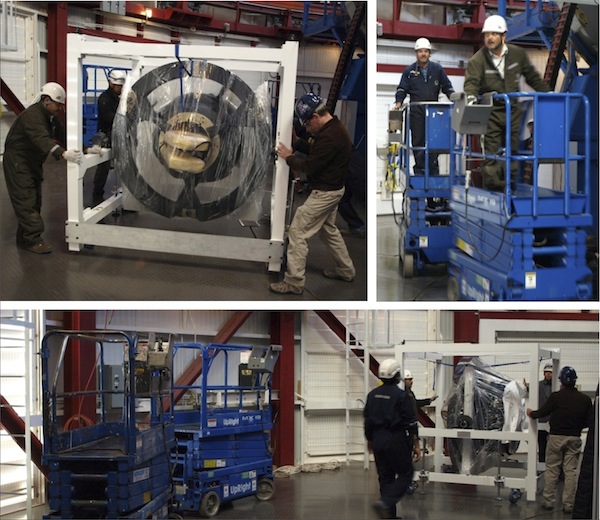
In order to install the secondary mirror, it must be lifted by crane out of its cart and across the telescope chamber, over to the telescope structure. This is a nerve-wracking process, so the crew proceeds slowly and systematically. Thanks for a flawless install, everyone!
Because the crew cannot easily access the telescope when it is pointed straight up (“zenith-pointing”), the whole telescope structure is tipped down (“horizon-pointing”). When the telescope is horizon-pointing, the top of the telescope structure (where the ASM is mounted), lines up with a catwalk which extends around the dome.

After dinner, Laird and Marco connected the control and cooling lines to the ASM. We use a liquid cooling system to keep the mirror components at a safe operating temperature, so before powering on the ASM, we checked for leaks (we were A-OK). Then, Marco showed Katie how to power on and configure the ASM.
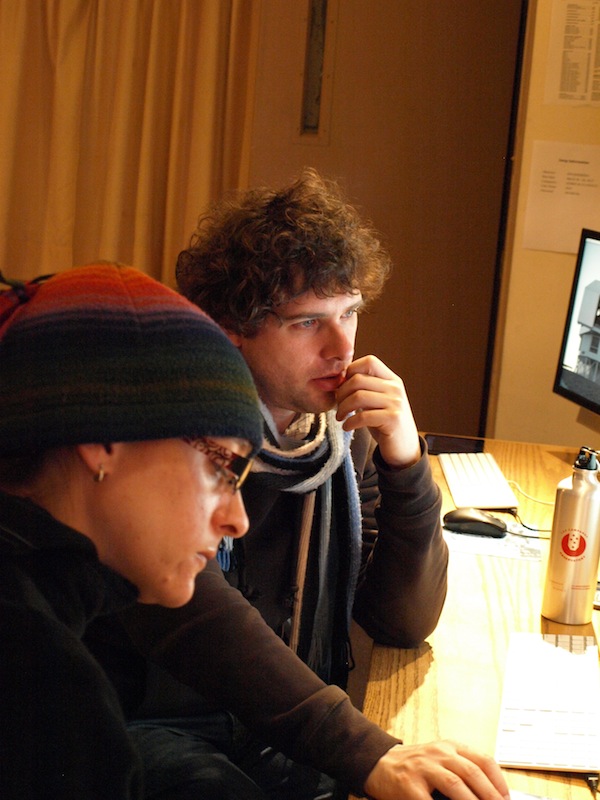
Amazingly, the ASM started up on the first try! We were all pleasantly surprised, since the system had been sitting in storage for several months. In fact, the time from start to finish of the entire installation and startup process was only 7hr, including a leisurely dinner break.
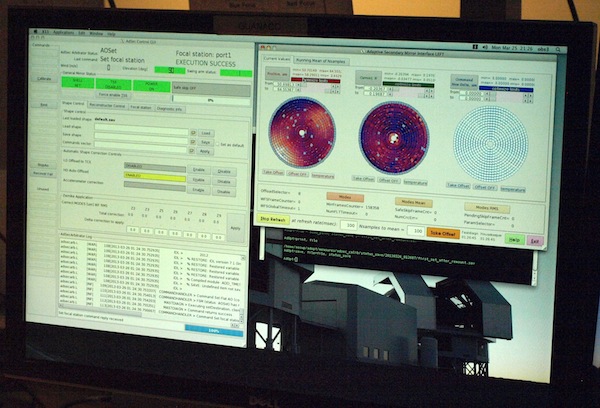
The ASM wake-up wasn’t the only thing going on around the mountain today.
Jared showed off his thesis project. We’ll be mounting the whole assembly tomorrow, so check back in to hear all about it!
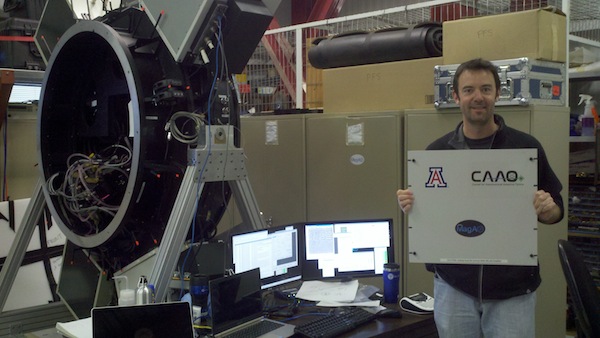
We continued to cool and test Clio:
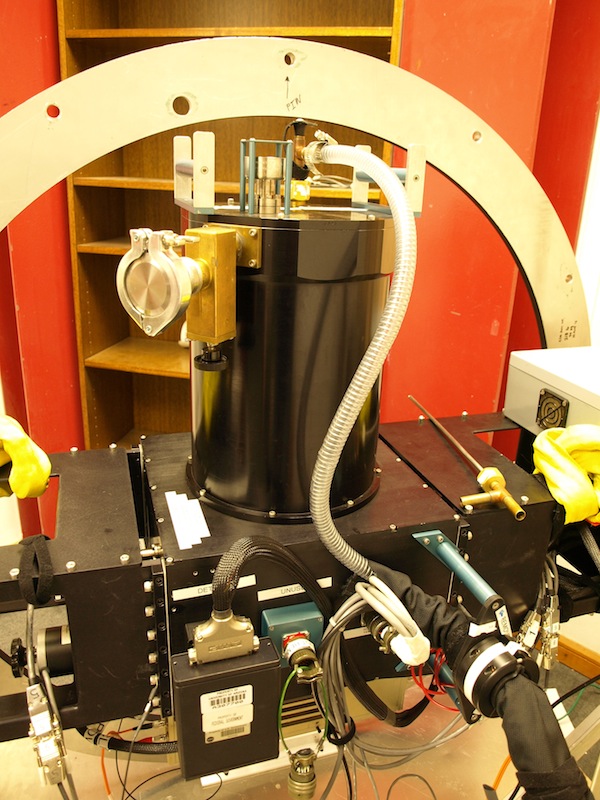
And Alfio helped debug the wavefront sensor control software:
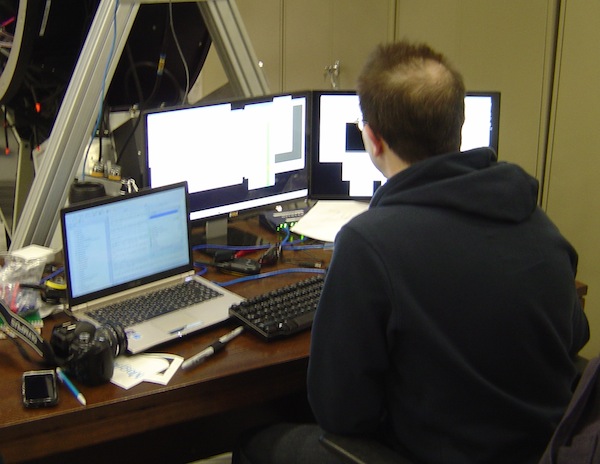
Lest you think it’s all work and no play on the mountain, we squeezed in a few photo-ops:
Another pretty sunset from the catwalk:
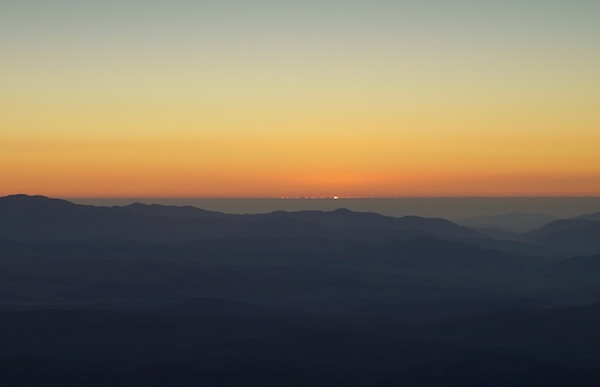
Along with an equally pretty moonrise:
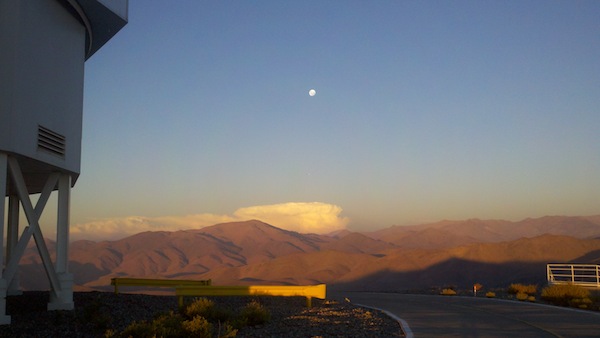
Miss Vis made an appearance:
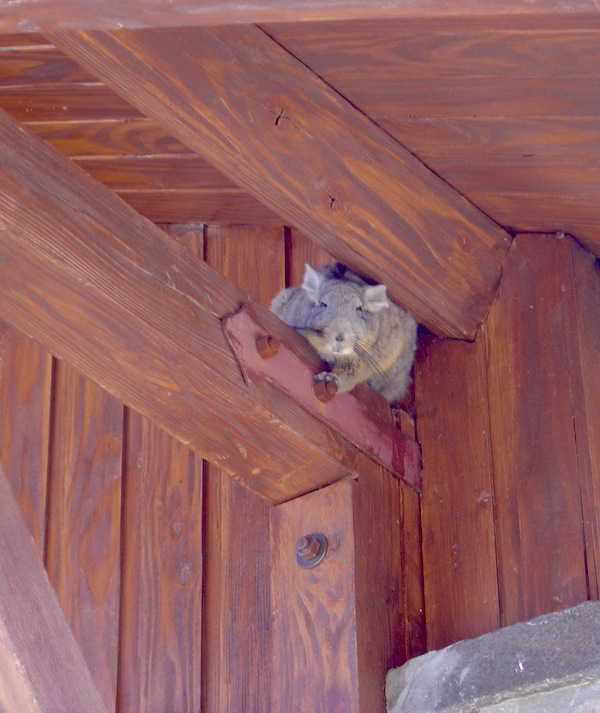
And I took a couple pictures of Clay and Baade by moonlight:
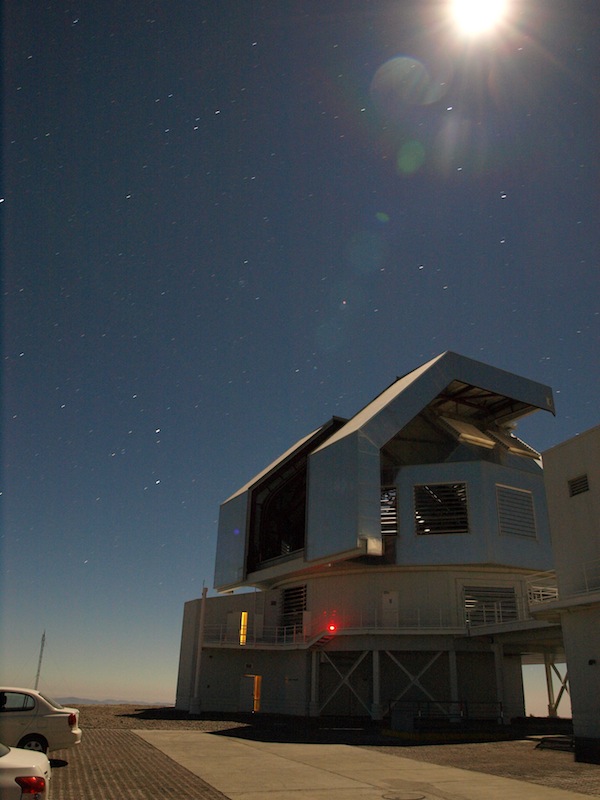

Quotes:
“Yay!” — Jared over the walkie talkie after Laird informed him the ASM was alive and well. (There was much rejoicing all around).
“You and Jared could power an approximately-infinite improbability drive.” — Vanessa’s parents after learning about the geographical coincidences mentioned in the previous blog post.
